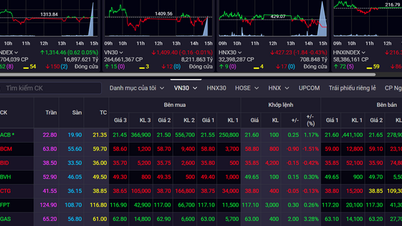In early April, US President Donald Trump imposed a 20% tariff on European Union (EU) goods and a 25% tariff on imported steel, aluminum and cars to address the trade imbalance between the two sides.
While the EU plans to retaliate by imposing 25% tariffs on many US goods, President Donald Trump unexpectedly announced a 90-day suspension of the reciprocal tariff policy for negotiations. However, the base tariff of 10% will still apply.
In that context, the German government has adjusted its 2025 gross domestic product (GDP) forecast to 0%, down from the 0.3% forecast in January.

This will be the first time in history that the EU's largest economy has not grown for three consecutive years, after shrinking in 2023 and 2024. The German government expects the country's economy to recover slightly in 2026, with growth now forecast at 0.9%, down from the previous estimate of 1.1%.
Data from the Federal Statistical Office shows that the United States is Germany's top trading partner in 2024, making the potential impact of Washington's tariff policy particularly worrying.
Previously, the International Monetary Fund (IMF) also reduced its economic growth outlook for Germany in 2025 to 0%, predicting that the country will be the only G7 economy to stagnate this year because Germany's export industries are particularly vulnerable to global trade tensions.
Uncertainty over tariffs has prompted German companies to delay investments until the situation becomes clearer, leading to changes in forecasts. If the 20% US tariffs are officially enacted, German economic growth could fall even lower. The Kiel Institute for the World Economy and the Ifo Institute for Economic Research previously estimated that the German economy could shrink by 0.3% under this scenario.
The German Economic Institute (IW) also warned that US tariff policies could reduce German economic output by 290 billion euros (equivalent to 330 billion USD) in 4 years, and predicted that the annual GDP of Europe's largest economy would be damaged by 1.6% in 2028.
IW urged the EU to respond aggressively, saying retaliation could extend beyond goods to include US digital companies and other service sectors. Given the significant services surplus between the US and the EU, such measures could be more effective than targeting only trade in goods.
The poor business performance has added to the gloom over the German economy, but some uncertainty may ease after the German parliament approved a 500 billion euro ($570 billion) infrastructure fund and debt-brake reforms in mid-March.
Forecasts for the German economy in the coming time may change depending on President Donald Trump's next move, as well as the results of negotiations between the EU and the US.
European Commission President Ursula von der Leyen has proposed a “zero-for-zero” deal, meaning no tariffs on industrial goods between the EU and the US. However, President Donald Trump has rejected the proposal, arguing that it is insufficient and demanding that the EU buy $350 billion in US energy in exchange for tariff reductions.
Source: https://hanoimoi.vn/kinh-te-duc-nguy-co-tri-tre-nam-thu-3-lien-tiep-700098.html


![[Photo] Welcoming ceremony for Prime Minister Pham Minh Chinh and his wife on an official visit to Malaysia](https://vphoto.vietnam.vn/thumb/1200x675/vietnam/resource/IMAGE/2025/5/25/dc30203c3ae24da3990266ec3b29bb2d)
![[PHOTO] Hanoi fences off demolition of "Shark Jaws" building](https://vphoto.vietnam.vn/thumb/1200x675/vietnam/resource/IMAGE/2025/5/25/1b42fe53b9574eb88f9eafd9642b5b45)
![[Photo] Funeral of former President Tran Duc Luong in Quang Ngai](https://vphoto.vietnam.vn/thumb/1200x675/vietnam/resource/IMAGE/2025/5/25/ccf19a3d8ea7450bb9afe81731b80995)

![[Photo] Ea Yieng commune settlement project abandoned](https://vphoto.vietnam.vn/thumb/1200x675/vietnam/resource/IMAGE/2025/5/25/57a8177361c24ee9885b5de1b9990b0e)
![[Photo] French President Emmanuel Macron and his wife begin state visit to Vietnam](https://vphoto.vietnam.vn/thumb/1200x675/vietnam/resource/IMAGE/2025/5/25/03b59c7613144a35ba0f241ded642a59)




















































































Comment (0)